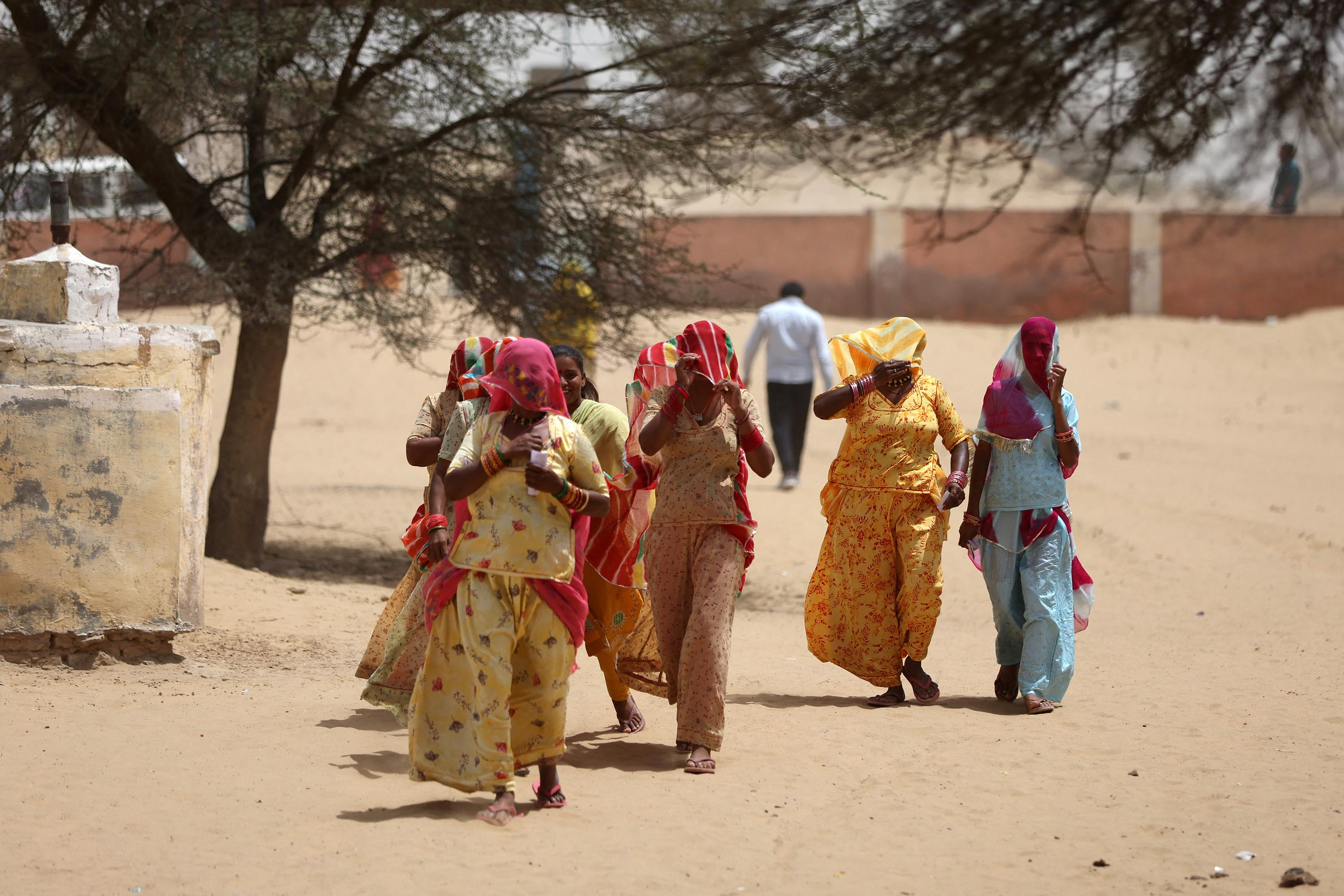The 21st century has not been any less kind. Saturday's strong earthquake left many dead and thousands injured. Eleven years ago, a temblor had killed thousands, if not hundreds of thousand.
Haiti is located near the intersection of the two tectonic plates which make up the Earth’s crust. When these plates are in contact with each other, friction can cause earthquakes. Haiti is also very densely populated. Many of Haiti's buildings can withstand hurricanes, not earthquakes. These buildings are strong enough to withstand strong winds, but they can be smashed if the ground shakes.
___
WHAT MAKES HAITI PRONE to EARTHQUAKES
The Earth's crust is composed of tectonic plates, which move. Haiti is located at the intersection of two plates -- the North American and Caribbean plates.
Multiple fault lines run between the plates and cut through the island of Hispaniola. Haiti shares this island with the Dominican Republic. Worse, not all fault lines behave in the same way.
Rich Briggs, a geologist at U.S. Geological Survey’s Geologic Hazards Sciences Center, stated that "Hispaniola is in a spot where plates transition between smashing together and sliding past one another."
He said, "It's almost like a rock stuck to the track of a sliding door." "It doesn't want to move smoothly because there are so many forces on it."
WHAT CAUSED THE MOST RECENT QAKE?
Saturday's magnitude 7.2 earthquake likely occurred along the Enriquillo-Plantain Garden fault zone, which cuts across Haiti's southwestern Tiburon Peninsula, according to the USGS.
It is the fault zone that caused the 2010 devastating earthquake. It's also likely to be the source of three other large earthquakes in Haiti, two of which decimated Port-au-Prince, between 1751-1806.
According to Gavin Hayes (USGS senior science advisor for earthquake and geologic hazards), earthquakes occur when tectonic plates are slowly moving against one another and create friction over time.
Hayes stated, "That friction builds up, and builds up, and eventually the strain that is stored there overcomes it." "And then the fault moves abruptly. This is what an earthquake looks like.
___
WHY ARE EARTHQUAKES IN HAITI SO DIVASTATING?
It is a combination of several factors, including a seismically active region, a high density of 11,000,000 people and buildings that are often built to withstand hurricanes.
Concrete and cinder blocks buildings are strong enough to withstand strong winds, but they can be damaged or collapsed if the ground shakes. Bad building practices could also play a part.
The magnitude-7.0 earthquake that struck Haiti in 2010 caused extensive destruction and was closer to Port-au-Prince, a densely populated city. Haiti's government claimed that more than 300,000 people died in the earthquake, but a U.S. government report said it was between 46,000- 85,000.
Wendy Bohon, a geologist at Incorporated Research Institutions for Seismology, stated that "natural disasters are not real." "What you have are natural hazards that cross with vulnerable systems."
___
WHAT IS THE FUTURE LIKE?
According to geologists, they can't predict the next earthquake.
Hayes, USGS said that "but we know that earthquakes such as this can cause similar-sized seismic events on the next section of the fault." "And it's quite dangerous in places that don’t have the building practices to withstand shaking.
Haiti is the Western Hemisphere's poorest country and continues to face challenges in building earthquake-resistant buildings.
Haiti was still recovering from Hurricane Matthew in 2016 and the 2010 earthquake. The country was plunged into political chaos after its president was assassinated.
While there have been success stories in Haiti of building earthquake-resistant structures, there has not been a central effort to do so, according to Mark Schuller, Northern Illinois University professor of anthropology, nonprofit and NGO studies and professor of anthropology.
Haiti's government is becoming weaker, and non-governmental organizations are focusing on their own projects.
"Haiti has technical knowledge. There are qualified architects. There are also city planners. Schuller stated that this is not the problem. Schuller stated that the problem is not lack of coordination funding or lack of political will by donors (to aid organizations).

 Germany: the trial of an AfD leader, accused of chanting a Nazi slogan, resumes this Tuesday
Germany: the trial of an AfD leader, accused of chanting a Nazi slogan, resumes this Tuesday New York: at Columbia University, the anti-Semitic drift of pro-Palestinian demonstrations
New York: at Columbia University, the anti-Semitic drift of pro-Palestinian demonstrations What is Akila, the mission in which the Charles de Gaulle is participating under NATO command?
What is Akila, the mission in which the Charles de Gaulle is participating under NATO command? Lawyer, banker, teacher: who are the 12 members of the jury in Donald Trump's trial?
Lawyer, banker, teacher: who are the 12 members of the jury in Donald Trump's trial? What High Blood Pressure Does to Your Body (And Why It Should Be Treated)
What High Blood Pressure Does to Your Body (And Why It Should Be Treated) Vaccination in France has progressed in 2023, rejoices Public Health France
Vaccination in France has progressed in 2023, rejoices Public Health France Food additives suspected of promoting cardiovascular diseases
Food additives suspected of promoting cardiovascular diseases “Even morphine doesn’t work”: Léane, 17, victim of the adverse effects of an antibiotic
“Even morphine doesn’t work”: Léane, 17, victim of the adverse effects of an antibiotic Orthodox bishop stabbed in Sydney: Elon Musk opposes Australian injunction to remove videos on X
Orthodox bishop stabbed in Sydney: Elon Musk opposes Australian injunction to remove videos on X One in three facial sunscreens does not protect enough, warns L'Ufc-Que Choisir
One in three facial sunscreens does not protect enough, warns L'Ufc-Que Choisir What will become of the 81 employees of Systovi, a French manufacturer of solar panels victim of “Chinese dumping”?
What will become of the 81 employees of Systovi, a French manufacturer of solar panels victim of “Chinese dumping”? “I could lose up to 5,000 euros per month”: influencers are alarmed by a possible ban on TikTok in the United States
“I could lose up to 5,000 euros per month”: influencers are alarmed by a possible ban on TikTok in the United States Dance, Audrey Hepburn’s secret dream
Dance, Audrey Hepburn’s secret dream The series adaptation of One Hundred Years of Solitude promises to be faithful to the novel by Gabriel Garcia Marquez
The series adaptation of One Hundred Years of Solitude promises to be faithful to the novel by Gabriel Garcia Marquez Racism in France: comedian Ahmed Sylla apologizes for “having minimized this problem”
Racism in France: comedian Ahmed Sylla apologizes for “having minimized this problem” Mohammad Rasoulof and Michel Hazanavicius in competition at the Cannes Film Festival
Mohammad Rasoulof and Michel Hazanavicius in competition at the Cannes Film Festival Skoda Kodiaq 2024: a 'beast' plug-in hybrid SUV
Skoda Kodiaq 2024: a 'beast' plug-in hybrid SUV Tesla launches a new Model Y with 600 km of autonomy at a "more accessible price"
Tesla launches a new Model Y with 600 km of autonomy at a "more accessible price" The 10 best-selling cars in March 2024 in Spain: sales fall due to Easter
The 10 best-selling cars in March 2024 in Spain: sales fall due to Easter A private jet company buys more than 100 flying cars
A private jet company buys more than 100 flying cars This is how housing prices have changed in Spain in the last decade
This is how housing prices have changed in Spain in the last decade The home mortgage firm drops 10% in January and interest soars to 3.46%
The home mortgage firm drops 10% in January and interest soars to 3.46% The jewel of the Rocío de Nagüeles urbanization: a dream villa in Marbella
The jewel of the Rocío de Nagüeles urbanization: a dream villa in Marbella Rental prices grow by 7.3% in February: where does it go up and where does it go down?
Rental prices grow by 7.3% in February: where does it go up and where does it go down? Europeans: “All those who claim that we don’t need Europe are liars”, criticizes Bayrou
Europeans: “All those who claim that we don’t need Europe are liars”, criticizes Bayrou With the promise of a “real burst of authority”, Gabriel Attal provokes the ire of the opposition
With the promise of a “real burst of authority”, Gabriel Attal provokes the ire of the opposition Europeans: the schedule of debates to follow between now and June 9
Europeans: the schedule of debates to follow between now and June 9 Europeans: “In France, there is a left and there is a right,” assures Bellamy
Europeans: “In France, there is a left and there is a right,” assures Bellamy These French cities that will boycott the World Cup in Qatar
These French cities that will boycott the World Cup in Qatar Serie A: Bologna surprises AS Rome in the race for the C1
Serie A: Bologna surprises AS Rome in the race for the C1 Serie A: Marcus Thuram king of Italy, end of the debate for the position of number 9 with the Blues?
Serie A: Marcus Thuram king of Italy, end of the debate for the position of number 9 with the Blues? Milan AC-Inter Milan: Thuram and Pavard impeccable, Hernandez helpless… The tops and flops of the derby
Milan AC-Inter Milan: Thuram and Pavard impeccable, Hernandez helpless… The tops and flops of the derby Ligue 2: Auxerre leader, Bordeaux in crisis, play-offs... 5 questions about an exciting end of the season
Ligue 2: Auxerre leader, Bordeaux in crisis, play-offs... 5 questions about an exciting end of the season


















